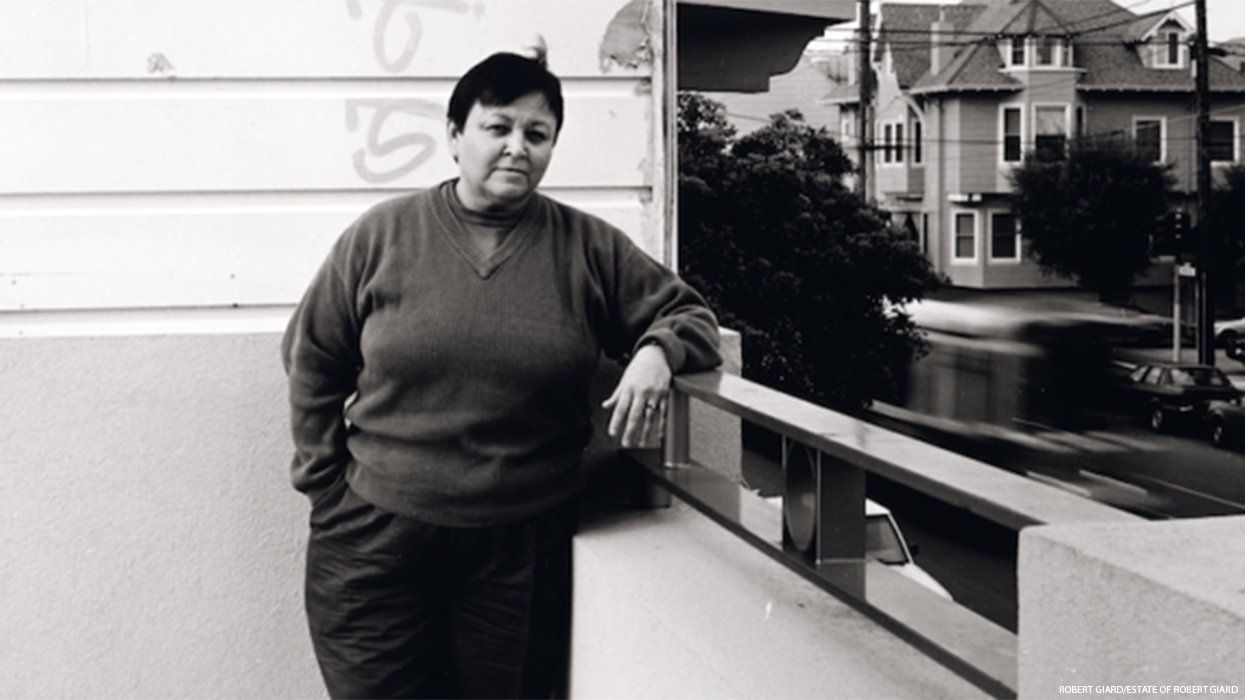People
Google Doodle Honors Lesbian Native American Activist Barbara May Cameron
Google Doodle Honors Lesbian Native American Activist Barbara May Cameron

By continuing to use our site, you agree to our Privacy Policy and Terms of Use.
Google Doodle Honors Lesbian Native American Activist Barbara May Cameron
Google Doodle Honors Lesbian Native American Activist Barbara May Cameron

Google has recognized what would have been the 69th birthday of late Native American photographer, poet, writer, and activist Barbara May Cameron with a Doodle.
The Doodle was created by queer Mexican and Chitimachan artist Sienna Gonzales. The image shows a cartoon of Cameron with a camera around her neck and holding a pride flag. LGBTQ+ figures are behind her along with her adopted city of San Francisco. The mountains of North Dakota are also featured.
Cameron was born in Fort Yates, North Dakota on May 22, 1954.
She was raised by her grandparents on the Standing Rock Reservation and was a member of the Hunkpapa group, which is one of the seven council fires of the Lakota tribe, according to an announcement by Google.
The lesbian activist and creative studied film and photography at the American Indian Art Institute in Santa Fe, New Mexico.
She moved to San Francisco in the early 1970s, becoming active in the queer rights movement of the time and specifically pushing for acceptance of LGBTQ+ people in Native American communities. She also addressed the racism found in LGBTQ+ spaces.
Cameron co-founded Gay American Indians in 1975 with her friend Randy Burns. The group was the first Native American LGBTQ+ organization.
She organized initiatives to support human rights throughout her life, raning from organizing the Lesbian Gay Freedom Day Parade and Celebration to co-leading a lawsuit against immigration authorities for turning queer people away.
\u201cPhotographer, poet, writer, and human rights advocate \u2014 Barbara May Cameron did it all.\n\nToday's #GoogleDoodle honors the Native American activist, who dedicated her life to combating racism, sexism, and homophobia \u2014> https://t.co/37VDVPVQ7A\n\n\ud83c\udfa8: Sienna Gonzales\u201d— Google Doodles (@Google Doodles) 1684760401
“People know the serious side of Barbara, because she was serious about justice, serious about the civil rights and safety of native people, of lesbian and gay people, of women. But she had her playful side, and the most tender heart,” Cameron’s partner, Linda Boyd-Durkee, said in the release.
The activist loved animals, spending time with her son, and being with friends while enjoying the beauty of the Pacific coast, Boyd-Durkee said.
Google notes that HIV disproportionally affects Indigenous people. That fact led Cameron to become involve in the San Francisco AIDS Foundation, the American Indian AIDS institute, and as a consultant for the U.S. Department of Health and Human Services and the Centers for Disease Control and Prevention.
“There are people all over the country who were impressed by something that she said in a talk to a college class in Women’s History or Native History, or at an AIDS conference or a LAFA event or anywhere else that Barbara spoke,” Boyd-Durkee said. “Our hope for her legacy is that those who were so moved will honor her by standing up for the lives to which she dedicated hers.”
Cameron died of natural causes on February 12, 2002, at the age of 47.
“As a queer woman of color, this project served as a powerful reminder that intersectional activism has a rich history that predates my personal awareness. It was both surprising and noteworthy to discover that individuals like Barbara have been courageously raising their voices and effecting change for much longer than I had realized,” Gonzales, the artist behind the Doodle, said. “Their ongoing commitment inspires me in my own journey.”
Charlie Kirk DID say stoning gay people was the 'perfect law' — and these other heinous quotes